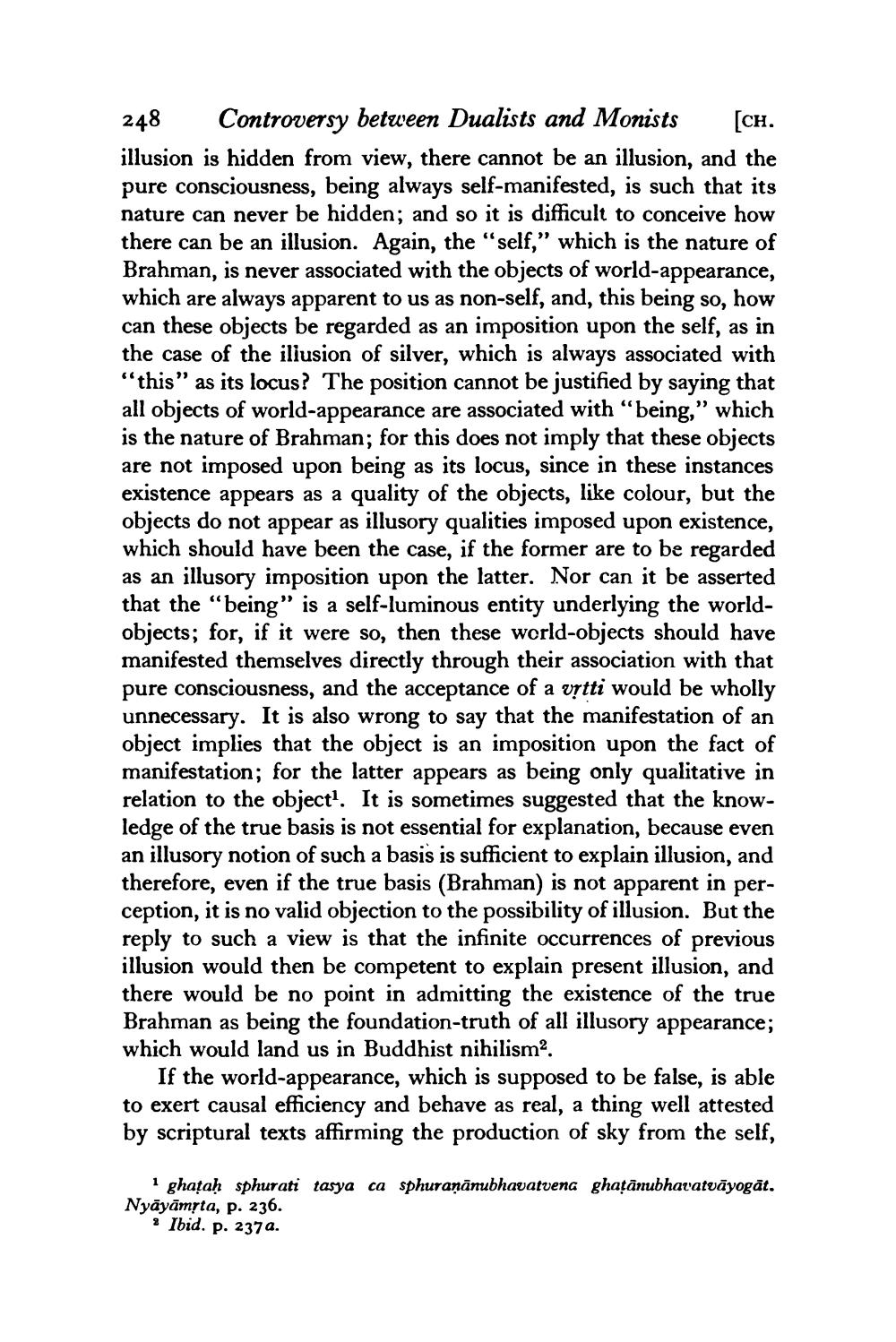________________
248 Controversy between Dualists and Monists [ch. illusion is hidden from view, there cannot be an illusion, and the pure consciousness, being always self-manifested, is such that its nature can never be hidden; and so it is difficult to conceive how there can be an illusion. Again, the "self,” which is the nature of Brahman, is never associated with the objects of world-appearance, which are always apparent to us as non-self, and, this being so, how can these objects be regarded as an imposition upon the self, as in the case of the illusion of silver, which is always associated with “this" as its locus? The position cannot be justified by saying that all objects of world-appearance are associated with “being," which is the nature of Brahman; for this does not imply that these objects are not imposed upon being as its locus, since in these instances existence appears as a quality of the objects, like colour, but the objects do not appear as illusory qualities imposed upon existence, which should have been the case, if the former are to be regarded as an illusory imposition upon the latter. Nor can it be asserted that the "being" is a self-luminous entity underlying the worldobjects; for, if it were so, then these world-objects should have manifested themselves directly through their association with that pure consciousness, and the acceptance of a vịtti would be wholly unnecessary. It is also wrong to say that the manifestation of an object implies that the object is an imposition upon the fact of manifestation; for the latter appears as being only qualitative in relation to the object. It is sometimes suggested that the knowledge of the true basis is not essential for explanation, because even an illusory notion of such a basis is sufficient to explain illusion, and therefore, even if the true basis (Brahman) is not apparent in perception, it is no valid objection to the possibility of illusion. But the reply to such a view is that the infinite occurrences of previous illusion would then be competent to explain present illusion, and there would be no point in admitting the existence of the true Brahman as being the foundation-truth of all illusory appearance; which would land us in Buddhist nihilismo.
If the world-appearance, which is supposed to be false, is able to exert causal efficiency and behave as real, a thing well attested by scriptural texts affirming the production of sky from the self,
ghatah sphurati tasya ca sphuranānubhavatvena ghatānubhavatvāyogāt. Nyāyāmsta, p. 236.
3 Ibid. p. 237a.




